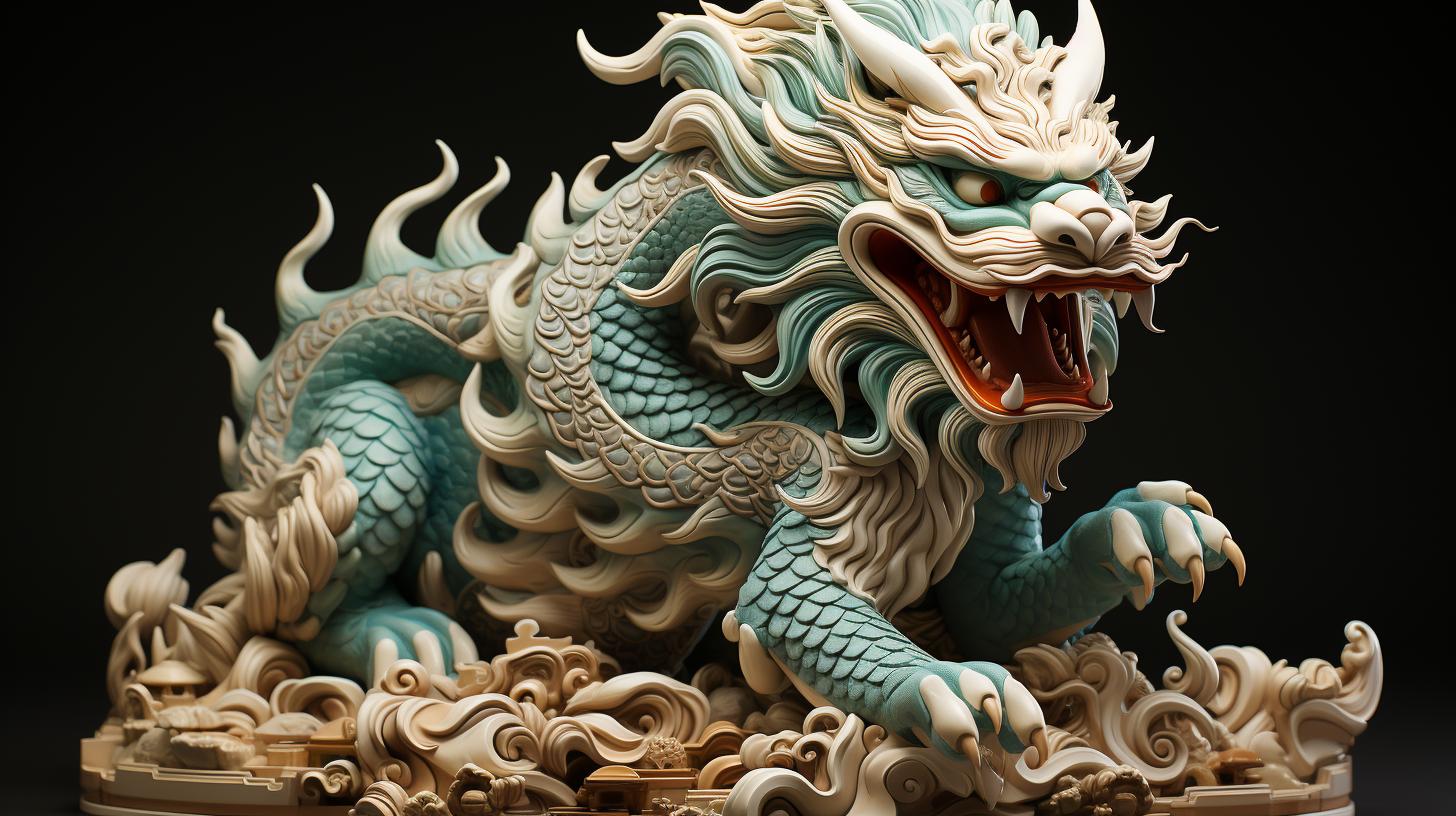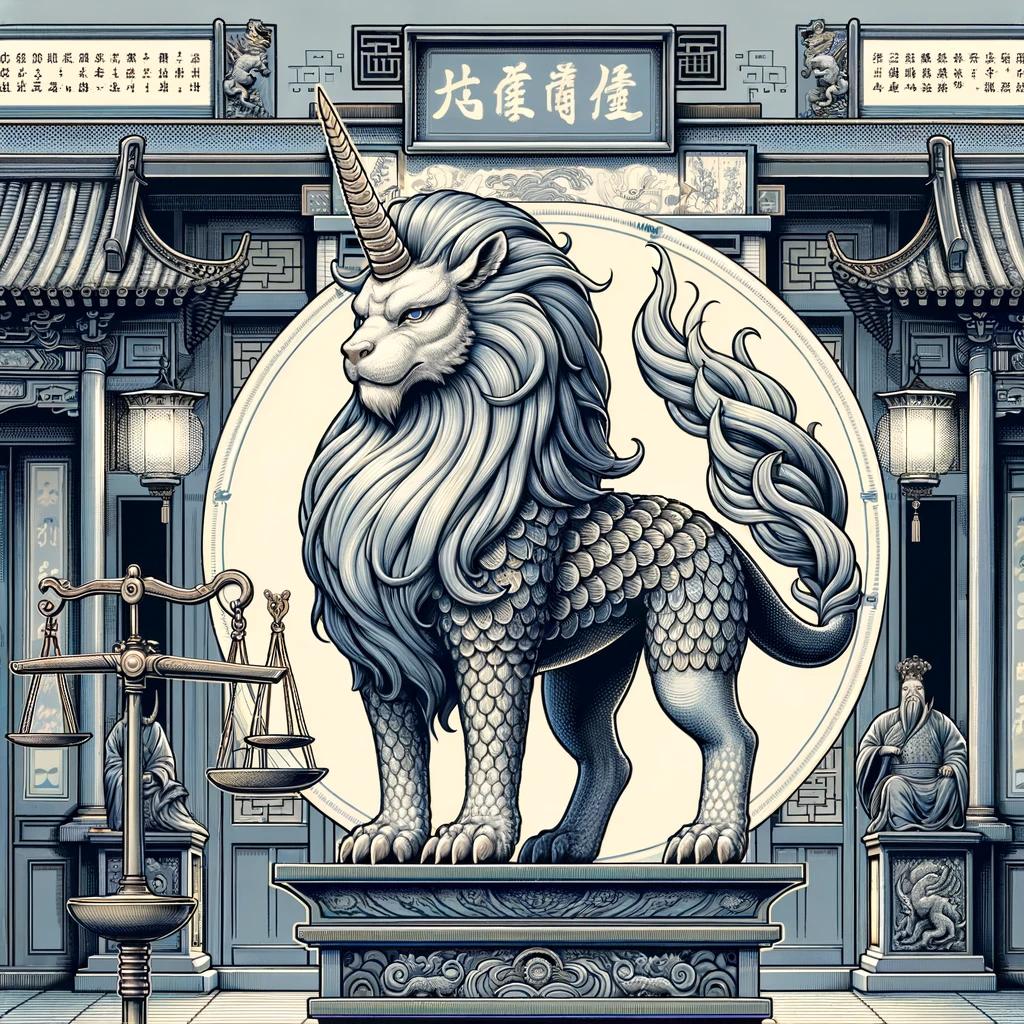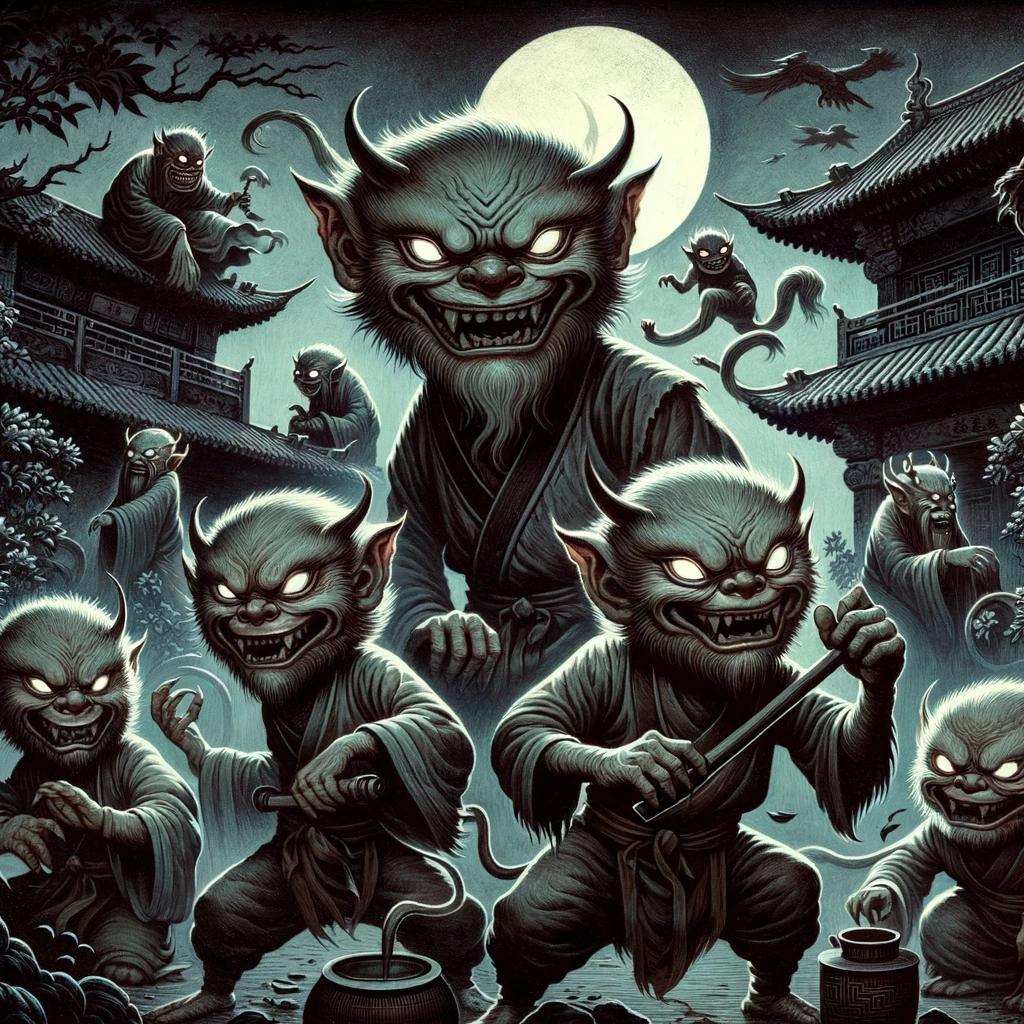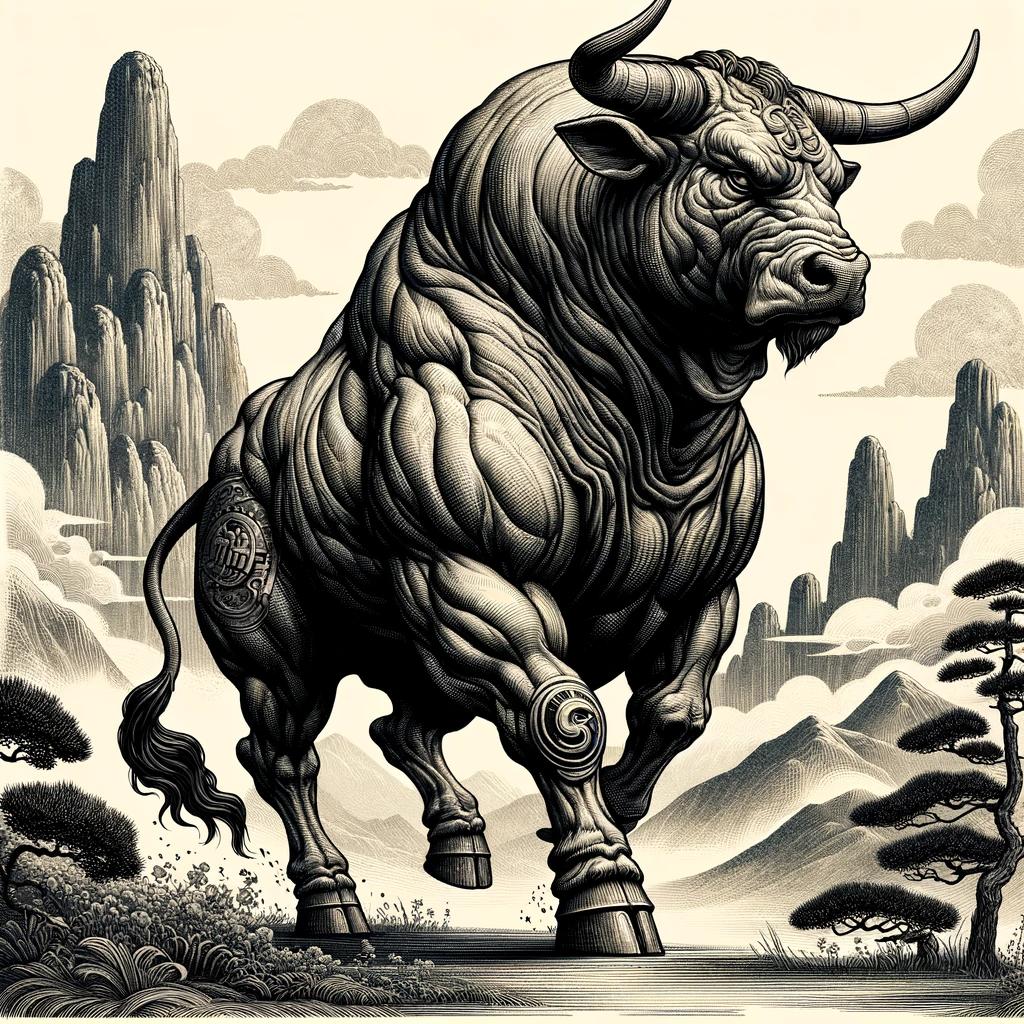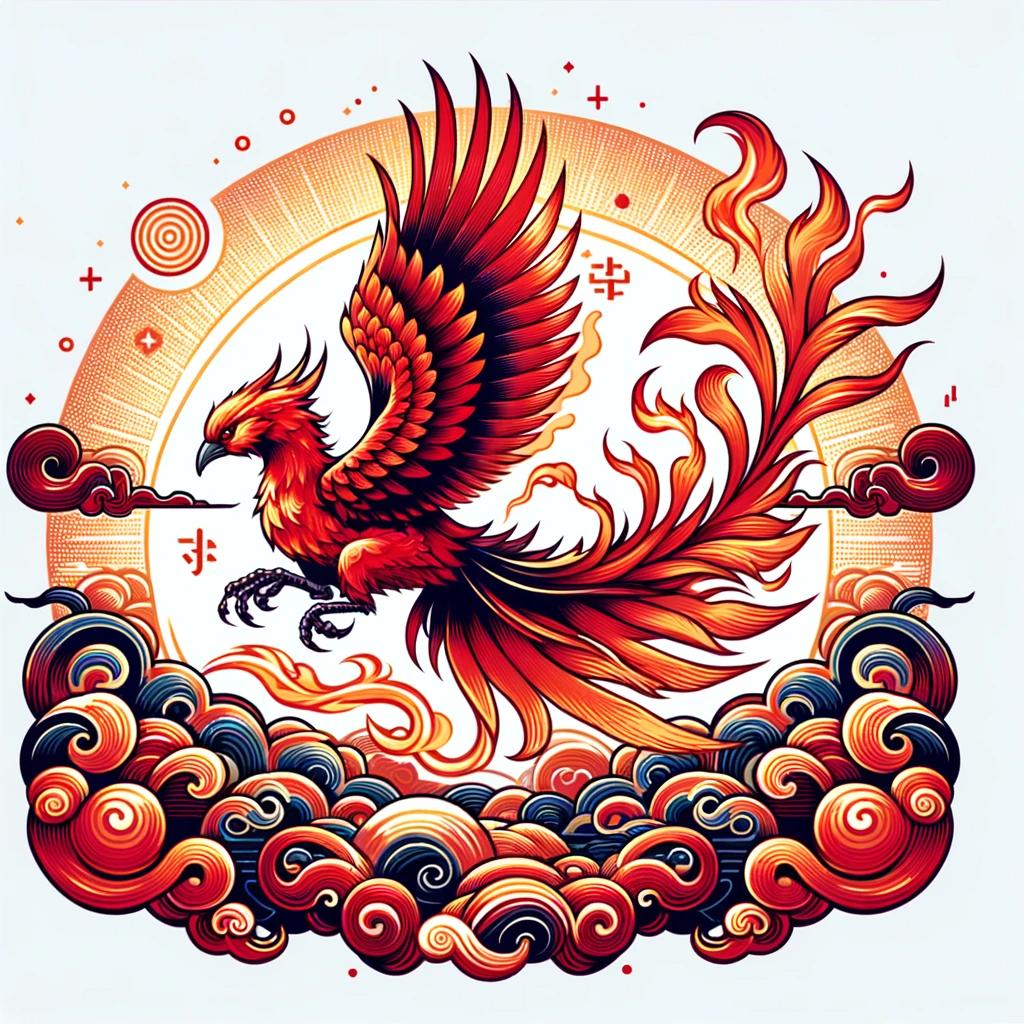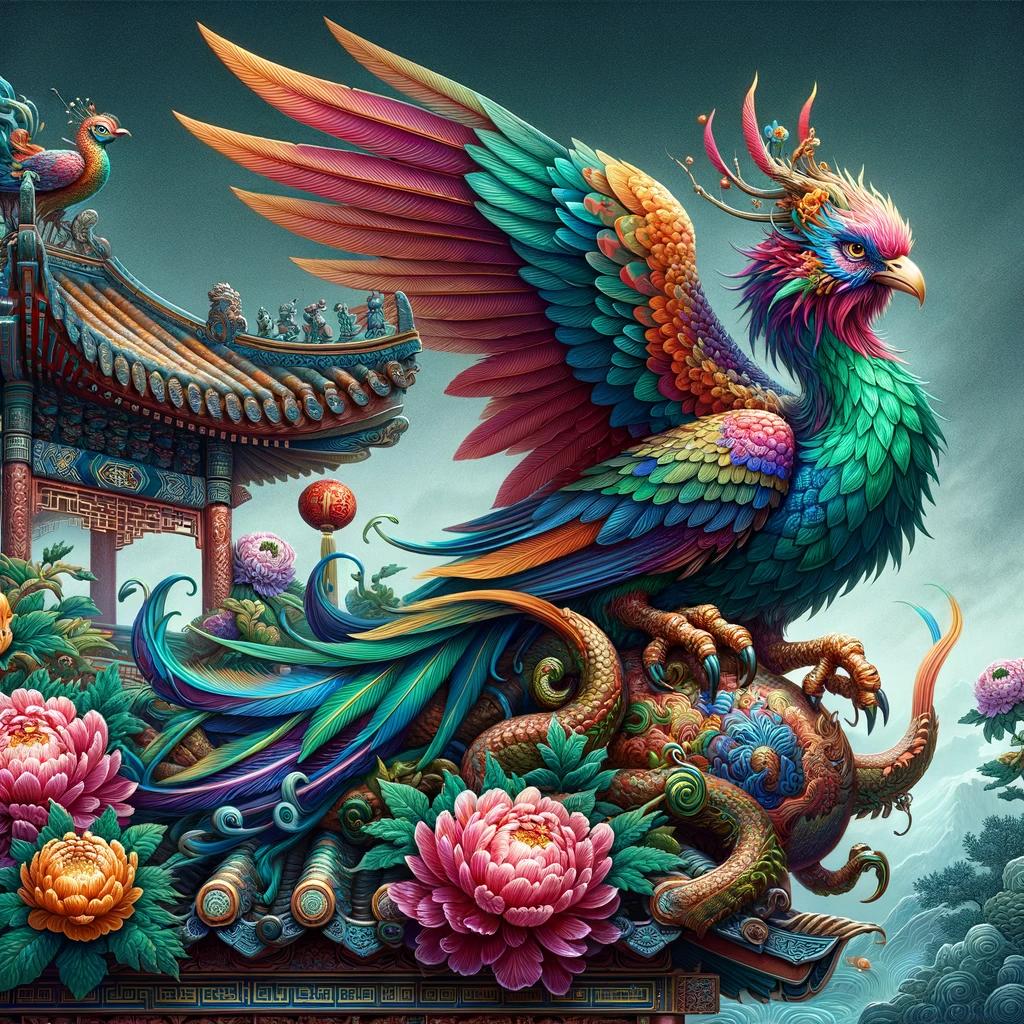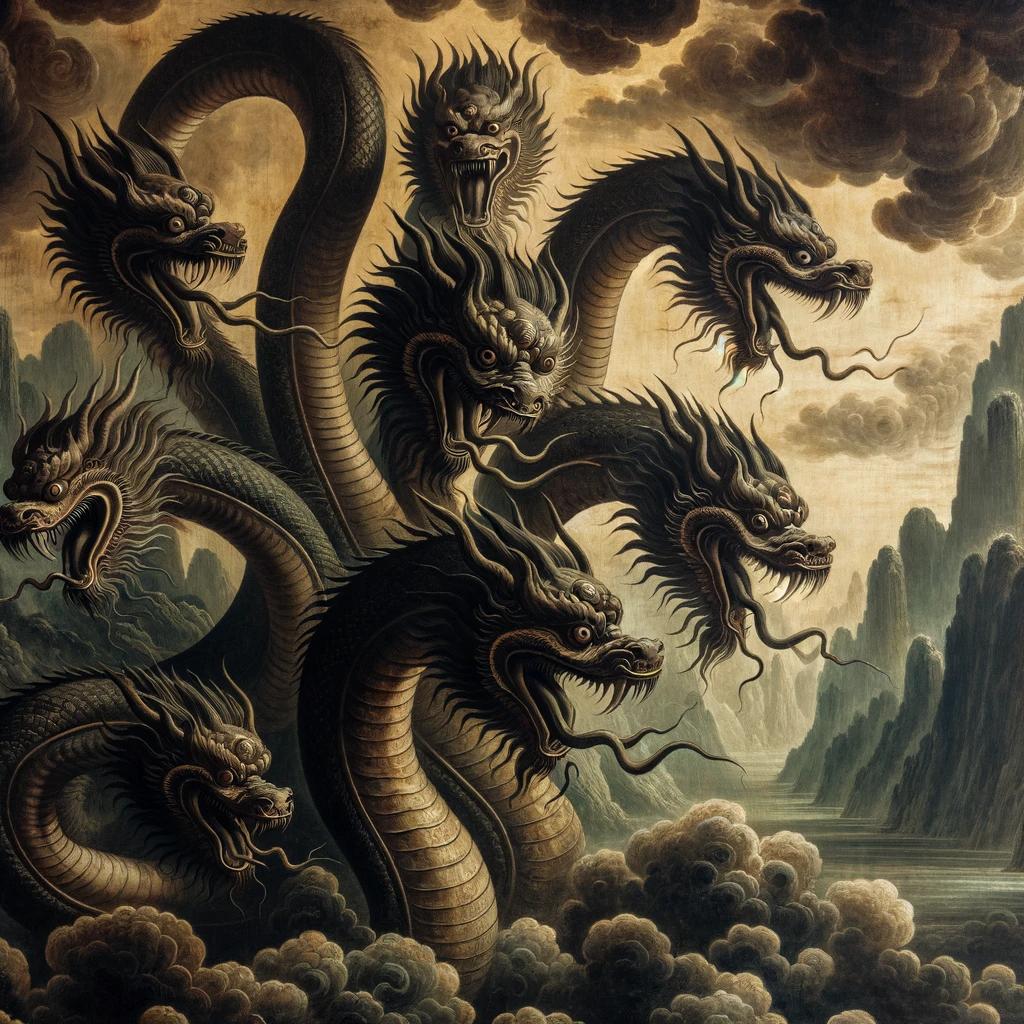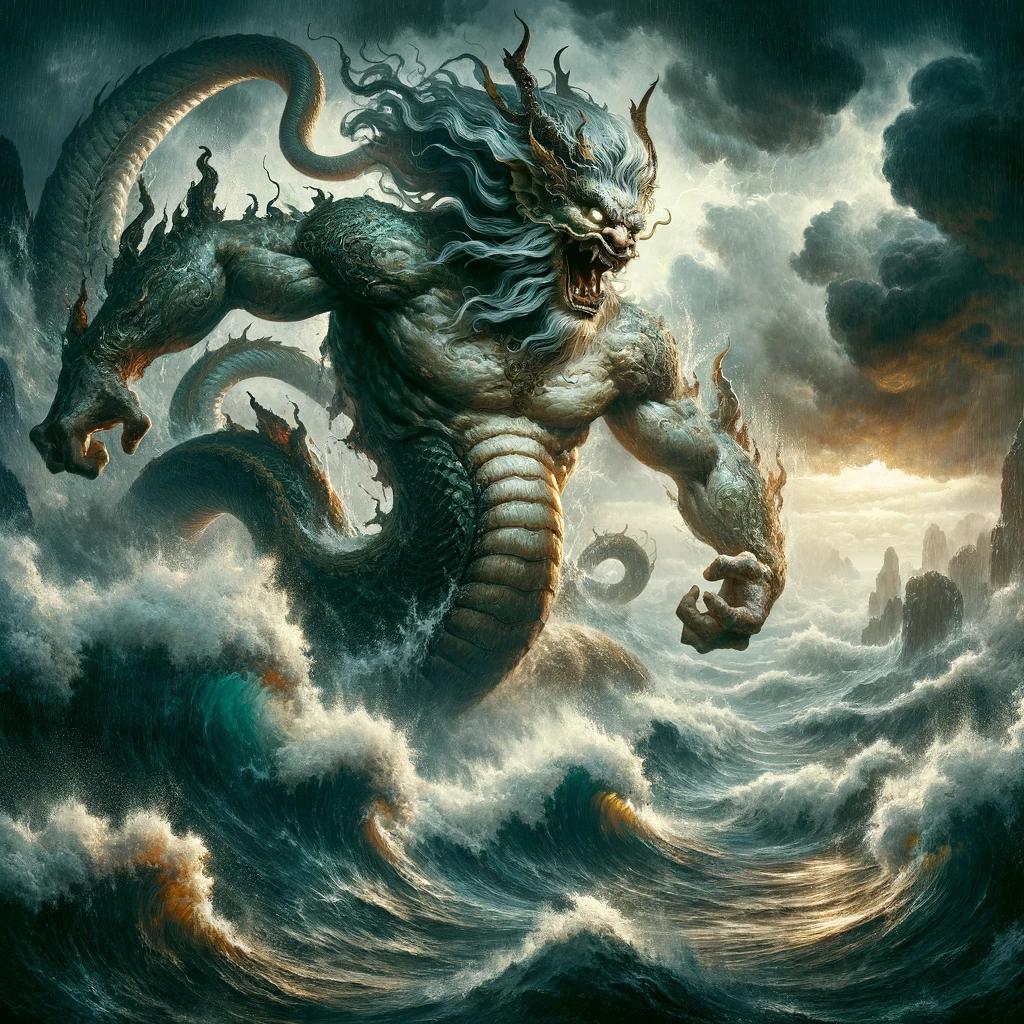Qilin Chinese Mythology: Unraveling the Mystique of the Chinese Unicorn

Qilin Chinese Mythology holds a significant place in ancient Chinese folklore. This mythical creature, often referred to as the Chinese unicorn, has evolved over centuries and is associated with wise rulers and sages.
Its appearance shares similarities with Chinese dragons, featuring distinct horns, flowing manes, and split hooves. The Qilin’s benevolent nature symbolizes virtues such as courage, benevolence, and talent. Furthermore, its influence extends beyond China, as it has influenced mythologies in Japan, Korea, and Thailand.
The Qilin’s cultural impact is evident in various art forms and its fusion with the concept of unicorns in the Western world. Additionally, it is closely related to other mythical creatures like the Chinese dragon and the phoenix.
Origins of Qilin in Chinese Mythology
Qilin, the legendary creature in Chinese mythology, has a rich and fascinating origin that dates back centuries. Exploring the origins of Qilin allows us to unravel the mysteries surrounding this mythical beast and understand its significance in Chinese culture.
Early References in Ancient Chinese Poetry
One of the earliest mentions of Qilin can be found in the ancient Chinese poetry known as the Classic of Poetry. The poem ‘Feet of the Lin’ introduces the concept of Lin, a family of single-horned beasts to which Qilin belongs.
These early references illustrate the cultural and literary significance of Qilin in ancient Chinese society.
Confucius and the Identification of Lin
The great philosopher Confucius is credited with identifying a captured Lin, further enhancing the historical importance of Qilin. His recognition of this mystical creature, documented in the Annals of Spring and Autumn, adds to the intrigue and lore surrounding Qilin in Chinese mythology.
Evolution of Qilin’s Representation Over Centuries
Over the centuries, the representation of Qilin has undergone significant transformations. Initially, Qilin had resemblances to a Lin, but as time passed, its appearance evolved to incorporate features similar to Chinese dragons.
These adaptations reflect the cultural and artistic influences that shaped Qilin’s depiction throughout history.
From its humble beginnings in ancient Chinese poetry to Confucius’ identification and the subsequent evolution of its representation, the origins of Qilin in Chinese mythology form an integral part of understanding this fantastical creature’s significance in Chinese culture.
Appearance and Characteristics of Qilin
The Qilin, a mythical creature in Chinese mythology, possesses unique and captivating features that set it apart. Its appearance shares some similarities with Chinese dragons while boasting distinct characteristics that make it easily recognizable.
Similarities to Chinese Dragons
The Qilin displays notable resemblances to Chinese dragons, particularly in its majestic presence and mythical aura. With its long, sinuous body and fierce countenance, the Qilin exudes the same sense of power and awe as the legendary dragons.
Unique Features: Horn, Mane, and Hooves
One of the defining features of the Qilin is its single horn, elegantly protruding from its forehead. This horn symbolizes its divine nature and represents wisdom and enlightenment. Additionally, the Qilin boasts a magnificent mane that flows gracefully upwards, adding to its regal and ethereal appearance.
Its hooves are noteworthy as well, as they are split, similar to those of deer, contributing to its mythical and otherworldly essence.
Variations in Color and Jeweled Representations
While dragons are typically depicted in shades of gold, the Qilin transcends such limitations. It can appear in a myriad of colors, ranging from vibrant hues to subtle tones. This versatility allows for artistic interpretations that capture the essence of the creature in diverse ways.
Furthermore, the Qilin is often adorned with precious jewels or radiates a jewel-like glow, adding an element of mystique and magnificence to its overall portrayal.
Symbolism and Significance of Qilin
The Qilin holds great symbolism in Chinese mythology, representing various virtues and possessing significant connections to rulers and individuals of importance.
Association with Wise and Virtuous Rulers
The Qilin is closely associated with wise and virtuous rulers throughout Chinese history. It is said to appear in the presence of these distinguished individuals, signifying their greatness and sageliness. The presence of the Qilin in the gardens of Emperor Amarillo and the capital of Emperor Yao is considered a testament to their benevolent reigns.
Connections to Emperor Huangdi and Emperor Yao
Emperor Huangdi and Emperor Yao, both important figures in Chinese mythology, share a special connection with the Qilin. According to legend, the birth of Confucius was announced by the arrival of a Qilin, further solidifying its association with legendary figures.
The Qilin’s presence in these narratives reflects its role in heralding significant events and individuals.
Qilin as a Symbol of Benevolence, Courage, and Talent
Beyond its connections to rulers, the Qilin symbolizes various virtues, including benevolence, courage, and talent. Its appearance is believed to signify a time of prosperity and auspiciousness. The creature’s benevolence is admired and revered, serving as an inspiration for individuals to embody these qualities in their own lives.
The Qilin’s representation has evolved over time, influenced by both Chinese culture and broader Eastern traditions. Its imagery and symbolism continue to make an impact in the modern world, and interpretations of the Qilin can be found in art, folklore, and popular culture.
Influence of Qilin in Other Cultures
In addition to its prominence in Chinese mythology, the Qilin has also left its mark on other Asian cultures, with variations of the creature appearing in Japanese, Korean, and Thai mythologies.
Qilin in Japanese Mythology as Kirin
In Japanese mythology, the Qilin is known as the Kirin. It is regarded as a sacred creature and is revered for its noble and gentle nature. The Kirin is often depicted with the body of a deer, the tail of an ox, and the hooves of a horse.
It is said to bring good fortune and is considered a symbol of prosperity and longevity.
Qilin in Korean Mythology as Girin
In Korean mythology, the Qilin is referred to as the Girin. Initially depicted as a deer, the Girin gradually transformed into a horse-like creature over time. It is believed to possess great wisdom and is associated with positive qualities such as grace, elegance, and intelligence.
The Girin is often depicted accompanying divine and mythical figures.
Qilin in Thai Mythology as Gilen
In Thai mythology, the Qilin is known as the Gilen and is considered one of the mythical animals of the Himapant forest. The Gilen is believed to possess immense strength and is often depicted in art and sculptures as a majestic creature with a powerful physique and a fierce expression.
It is regarded as a guardian and protector, symbolizing bravery and offering protection from evil spirits.
Qilin and its Cultural Impact
The Qilin holds a significant cultural impact, not only in China but also in various parts of East Asia. It has influenced art, folklore, and modern culture, and its fusion with the Western unicorn concept has further expanded its reach and recognition.
Fusion with Western Unicorn Concept
The Qilin’s depiction as a mythical creature with a single horn, similar to the Western unicorn, has led to its fusion with the unicorn concept in modern representations. This merging of cultures has created a captivating and enchanting image of the Qilin, further igniting fascination and intrigue among people worldwide.
Qilin in Art, Folklore, and Modern Culture
The Qilin’s striking appearance and symbolism have made it a popular subject in East Asian art, including paintings, sculptures, and ceramics. Its depiction often symbolizes good luck, protection, and prosperity. In folklore, stories featuring the Qilin often portray it as a benevolent and wise creature, elevating it to a revered status in local cultures.
Furthermore, the Qilin’s presence in modern culture can be seen in various forms, such as literature, film, and even video games. Its unique characteristics and association with positive traits have made it a beloved and iconic mythical creature, captivating audiences and fueling the imagination of creators.
Qilin’s Role in Shaping East Asian Beliefs and Traditions
The Qilin’s symbolism and virtuous associations have had a profound impact on shaping East Asian beliefs and traditions. Its presence in the gardens of influential emperors like Emperor Huangdi and Emperor Yao, as well as its association with Confucius, have solidified its role as a symbol of benevolence, courage, and talent.
Moreover, the Qilin’s influence extends beyond China and has woven into the fabric of neighboring cultures. In Japan, the Qilin is known as Kirin, often depicted on sake bottles and considered a sacred creature.
In Korea, the Girin bears similarities to the Qilin and holds significance in traditional ceremonies. Similarly, in Thailand, the Gilen is regarded as a mythical jungle creature in the Himapant mythology.
In conclusion, the Qilin’s cultural impact is widespread, transcending time and borders. Its fusion with the Western unicorn concept, representation in art and folklore, and role in shaping East Asian beliefs and traditions have solidified its status as a captivating and influential mythical creature.
Qilin and Other Mythical Creatures
Qilin, the legendary creature of Chinese mythology, shares significant connections with other mythical creatures, including the Chinese dragon and phoenix. These creatures form a rich tapestry of symbolism and cultural significance in East Asian traditions.
Let’s explore the various relationships of Qilin with other mythical beings:
Connections to Chinese Dragon and Phoenix
The Qilin shares striking similarities with the Chinese dragon, often being portrayed with a similar serpentine body, scaled skin, and majestic presence. Both creatures hold auspicious meanings in Chinese culture, symbolizing power, wisdom, and good fortune.
Additionally, they are believed to possess the ability to ward off evil spirits and bring blessings to those in their presence.
Similarly, the Qilin shares a deep connection with the phoenix, often represented as a pair, symbolizing the harmony between Yin and Yang forces.
The phoenix, known for its beauty and rebirth, complements the Qilin’s benevolent nature and exemplifies the cycle of life and renewal.
Qilin and the Four Auspicious Beasts
In Chinese mythology, the Qilin is one of the Four Auspicious Beasts, alongside the dragon, phoenix, and tortoise. These sacred creatures represent the cardinal directions and are associated with various elements and virtues.
The Qilin specifically represents the southern direction and embodies the virtue of righteousness. Its presence alongside the other auspicious beasts symbolizes harmony, balance, and prosperity.
Comparisons with Other Mythical Animals
- The Qilin, often referred to as the Chinese unicorn, bears resemblances to the unicorn of Western mythology.
Both creatures are depicted as majestic beings with a single horn and exude a sense of grace and mystique.
- Contrasting with the Qilin’s terrestrial nature, the mythical Japanese creature known as the Kirin possesses elements of both a dragon and a deer, reflecting its unique cultural interpretation.
- In Korean mythology, the Girin is initially represented as a deer-like creature but gradually transforms into a more horse-like figure over time.
- In Thai mythology, the Gilen is believed to be one of the mythical animals inhabiting the Himapant forest and possesses its own distinctive traits and symbolism.
These comparisons highlight the shared themes, artistic interpretations, and cross-cultural influences that exist within the realm of mythical creatures.
They give us a glimpse into the diverse and interconnected nature of folklore and mythology in different cultures.
.

